The third quarter of 2025 underscored the cannabis industry’s resilience amid continued regulatory uncertainty. Despite persistent speculation around federal rescheduling —including renewed attention from policymakers and public advocacy efforts — no meaningful policy shifts occurred. Nevertheless, the market continued to evolve at the state level, with active licenses declining slightly as operators recalibrated strategies in response to oversupply, pricing pressure, and increased competition.
Key Findings
- Active cannabis licenses declined slightly to38,364 from 39,047 in Q2 2025.
- 1,256 new licenses were issued for all activities in Q3 2025, down (11%) from 1,417 in Q2 2025.
- 28 states issued at least one license this quarter.
Cultivation, Manufacturing and Store licenses accounted for 90% of the cannabis licenses issued. The chart below compares the ratio between the second and third quarters of 2025.
- Cultivation licenses increased from 46% to 56% of the total.
- Stores were down 35% from 32%.
- Manufacturing declined from 19% to 13%.
In looking back at the last 12 months, the most volatile category for new licenses has been cultivation, which experienced a spike in April due to 210 new cultivator licenses being issued in Michigan.
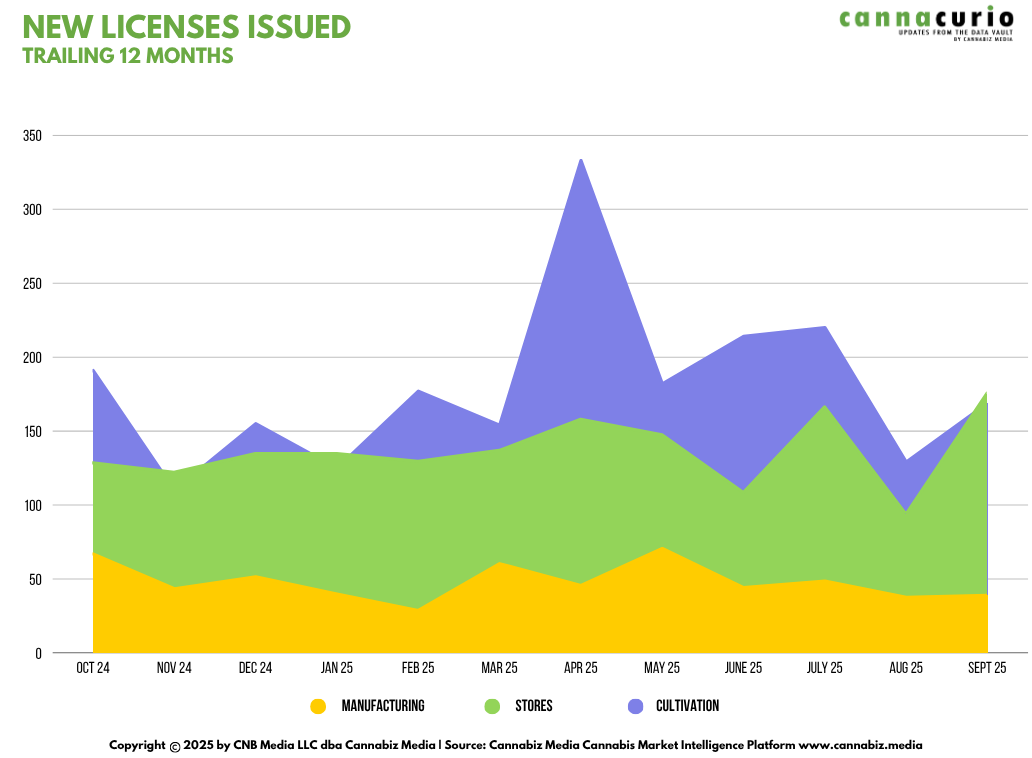
Here is the State Leaderboard for Q3 2025 with California in the lead. This table includes all licensed activities:
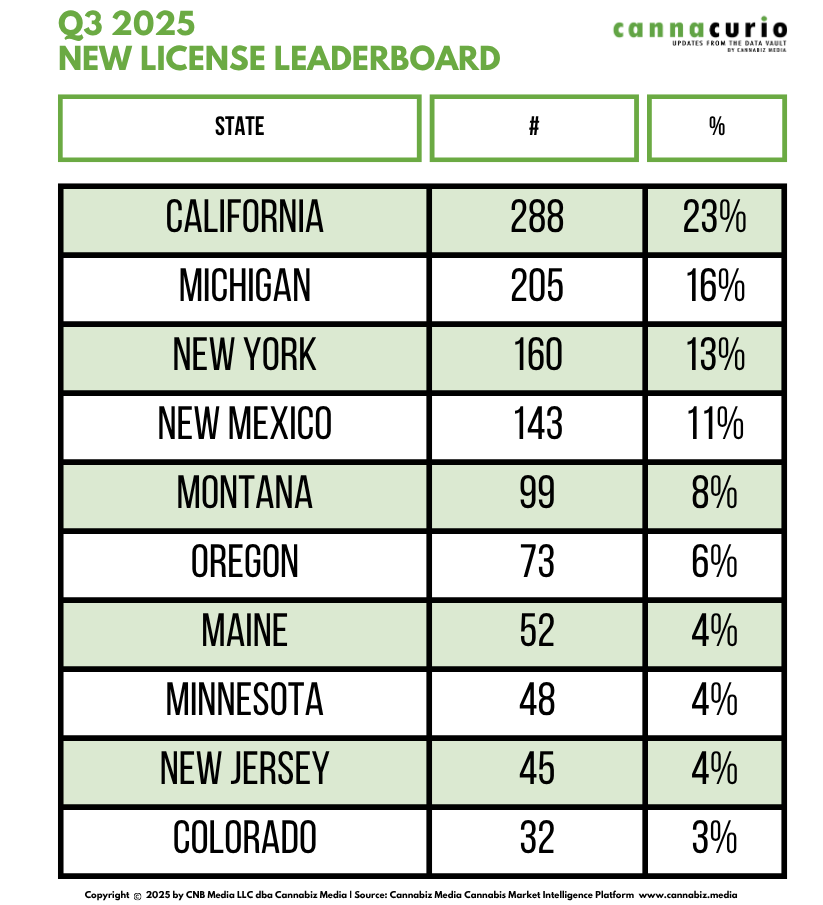
Activities
While there are many types of licenses in the cannabis ecosystem, cultivation, manufacturing and stores make up about 90% of the licenses issued – and they are universally licensed in all jurisdictions. The following section delves into these activities for Q3 2025. Oklahoma is excluded from the following analysis.
Cultivation
Throughout the year we have seen states reeling from low prices due to oversupply. Despite that 518 more cultivation licenses issued in the quarter and with most coming from California.
Cultivation Key Findings
- 518 cultivation licenses were issued in Q3; well down from 729 in Q2.
- California issued 190 (37%).
- Michigan issued 146 new cultivation licenses with Maine a distant third with 51.
- There are 17,652 active cultivation licenses nationwide down from 18,164 at the end of Q2.
The graph below shows new cultivation license issuance in 2025. The numbers are consistent except for April when Michigan issued 210 new licenses.
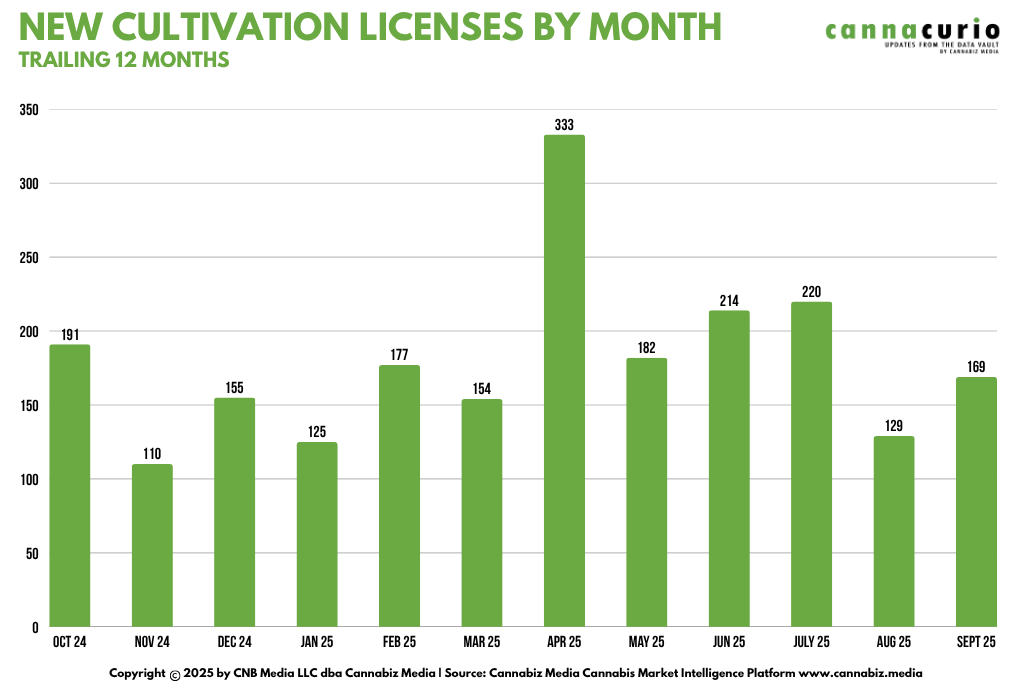
Here is the Q3 2025 Cultivation Leaderboard:

Manufacturing
As per usual, Manufacturing licenses were the smallest category in terms of new license issuance. In Q3, there were 170 new licenses issued across 17 states. This is down % from 218in Q2. The graph below shows that these licenses are issued at the rate of just 3 to 8 dozen a month.
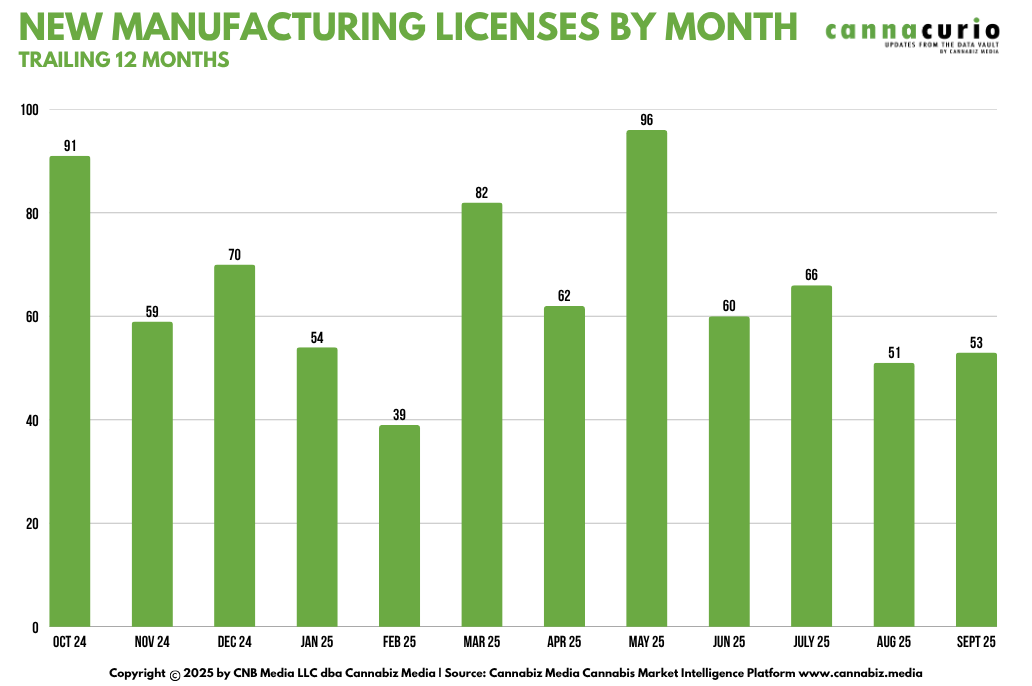
Manufacturing Key Findings
- 170 new manufacturing licenses were issued in Q3 2025, down from 218 in Q2.
- New York led the leaderboard with48 with New Mexico in second at 38.
- 17 states issued licenses for this activity in Q3, up from 16 in Q2.

Dispensary/Retail
Store openings still generate news and press releases. As the primary customer-touching license, they generate the most interest. They also face stiff competition from the illicit market as well as smoke, vape and CBD shops in some states. The graph below and trend line show a gentle upswing in new licenses nationwide.
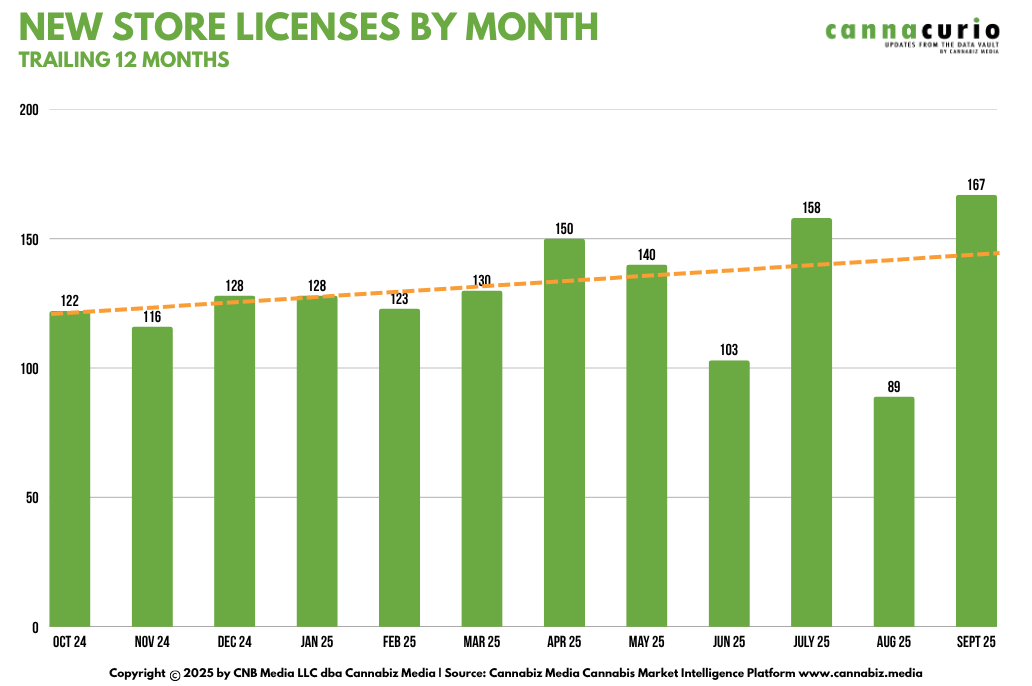
Store Key Findings
- 24 states added stores in Q3 down from 28 in Q2.
- 414 new store licenses were issued in Q3 down from 420 in Q2.
- There are 13,392 active licenses flat from 13,198 at the end of Q2.
- 180 Oklahoma stores have gone offline since January 1.
In the Store Leaderboard, New York has held onto their leadership position since Q4 2024; and accounted for almost twenty percent of all new store licenses issued in Q3 nationwide.
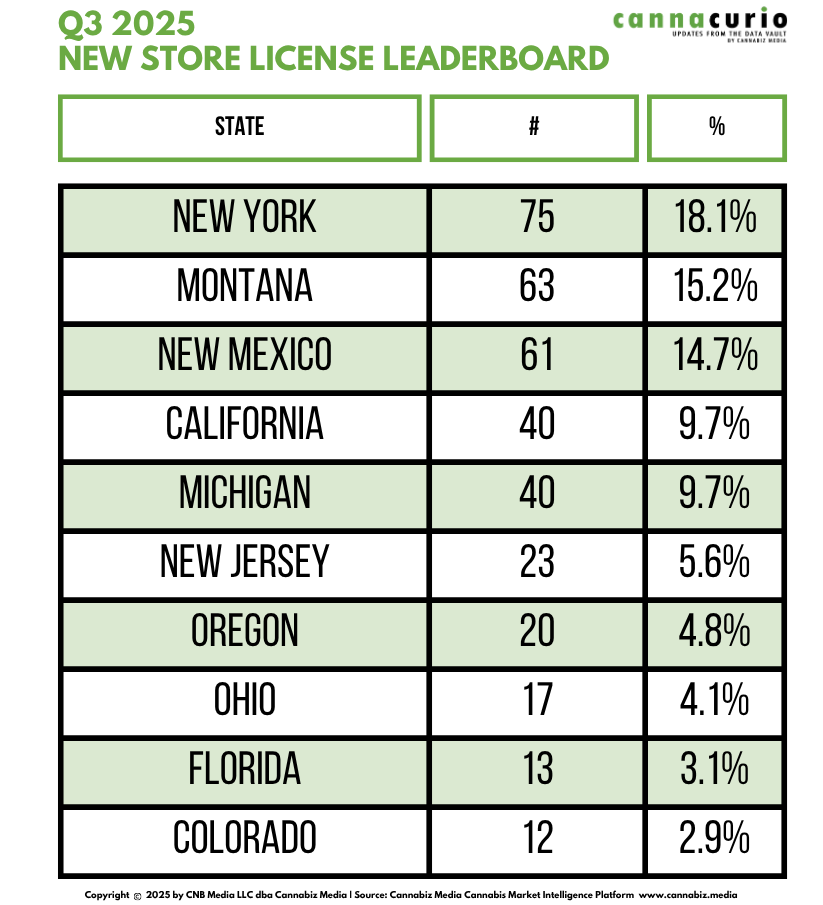
Conclusion
As Q3 2025 closes, the cannabis industry continues to navigate a landscape defined by regulatory uncertainty and shifting market dynamics. While federal rescheduling remains stalled, state-level activity underscores the industry’s resilience and adaptability. Licensing data this quarter shows a measured pace of growth — with cultivation remaining the most active category — even as oversupply and pricing pressures persist.
The modest decline in active licenses and concentration of new activity in a handful of key states suggest that consolidation and strategic expansion will define the next phase of market development. Operators and investors alike should monitor states such as Minnesota, Kentucky, Nebraska and Delaware, where emerging regulatory frameworks could present new opportunities in 2026.
Looking ahead to Q4, we expect licensing activity to continue its steady trajectory, with retail expansion and vertical integration shaping competitive strategies. Our next Cannacurio post will explore how 2025 finished up and what signals we are seeing for the broader market heading into 2026.
Author
Ed Keating is a co-founder of Cannabiz Media and oversees the company’s data research and government relations efforts. He has spent his career working with and advising information companies in the compliance space. Ed has managed product, marketing, and sales while overseeing complex multi jurisdictional product lines in the securities, corporate, UCC, safety, environmental, and human resource markets.
AtCannabiz Media, Ed enjoys the challenge of working with regulators across the globe as he and his team gather corporate, financial, and license information to track the people, products, and businesses in the cannabis economy.
Ed graduated from Hamilton College and received his MBA from the Kellogg School at Northwestern University.
Cannabiz Media customers can stay up-to-date on these and other new licenses through our newsletters, alerts, and reports modules. Subscribe to our newsletter to receive these weekly reports delivered to your inbox. Or you can schedule a demo for more information on how to access the Cannabiz Media Cannabis Market Intelligence Platform yourself to dive further into this data.
Cannacurio is a regular column from Cannabiz Media featuring insights from the most comprehensive license data platform. Catch up on Cannacurio posts and podcasts for the latest updates and intel.








